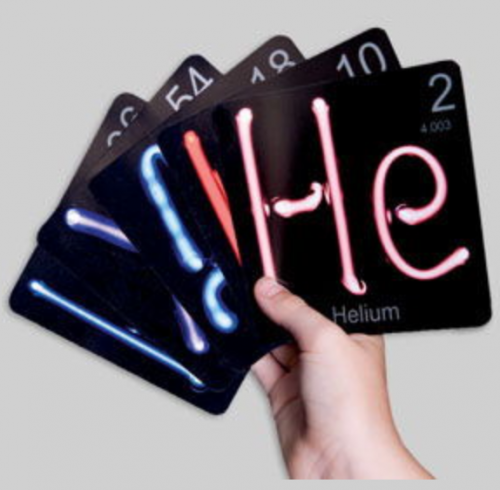Do you have a favorite In-Class Activity that you could share with the VIPEr community? Our second Community Challenge is to submit a new In-Class Activity learning object with "2019 Community Challenge #2" in the title. We will be collecting all these and awarding a random prize of an Element Card Deck (see description of my activity and link below) to one of those who contribute by February 15. If you need a refresher on how to submit a learning object on VIPEr, check out our step by step guide.
At DePauw, this year some of our introductory "Structure and Properties of Inorganic Compounds" course moved to a mostly flipped format. We spent two of the three days of class doing group work. One of the things that my colleague Selma Poturovic and I did to build community, keep the students on their toes, and reinforce course concepts was to switch up the ways that groups were formed each day. At the beginning of each class, we passed out cards (or slips of paper) that students had to classify in some way. They had to find their partners based on the classification of their card.
A couple of implementation notes. Sometimes we'd state the categories at the beginning (and either call them out so students could self-identify or place a post-it somewhere in the room where they could congregate). Sometimes if there were absences we had to move students around at the end so that the groups were more equal in number. We would walk around and help clarify concepts for people who needed help with their classifications.
As the semester progressed these are some of the ways we grouped students:
- classifying types of compounds (ionic, covalent, hydrates, acids, etc.)
- special groups on the periodic table (lanthanides, alkali metals, noble gases, etc.)
- specific orbitals (3dxy, 4py, 5dz2 , etc.)
- valence orbitals (2s, 4d, 4f, etc.)
- shapes of molecules and/or bond angles (trigonal pyramidal, square pyramidal, bent, etc.)
- types of solids (ionic, metallic, molecular, etc.)
- categories of acids and bases (strongly acidic, weakly acidic, non-acidic, etc.)
- potential ranges of redox reactions
- number of unpaired electrons of transition metal complexes (e.g. "low spin Ir2+")
- Hard, soft and borderline acids and bases
Theo Gray's (winner of the 2002 Ignoble Prize and co-founder of Mathematica!) company, The Most Beautiful Periodic Tables in the World, has reasonably durable elements cards that work really well for some of these categories.
Image Copyright: Theodore Gray.
The course I am describing is an intro level course, but there could be lots of additional ways to group students in an upper-level inorganic course (electron count, classifying organometallic reactions)! Does anyone else do this? Any other clever ways to group students?
